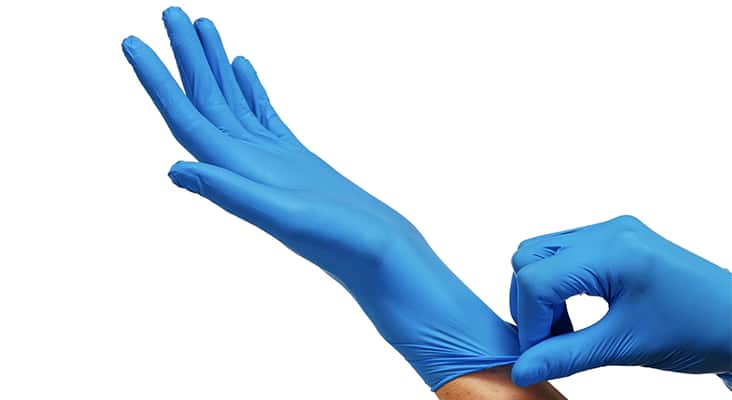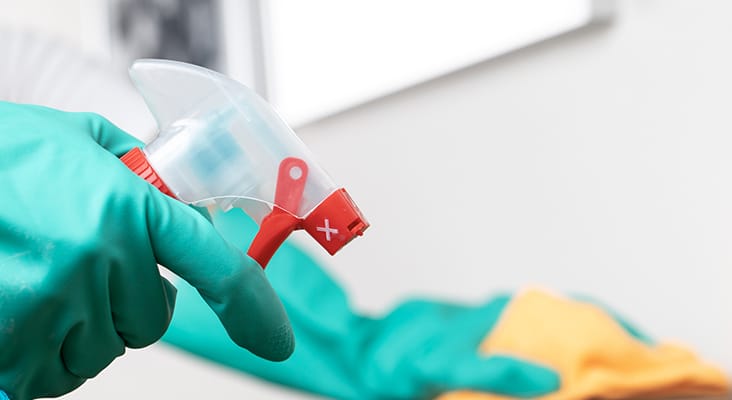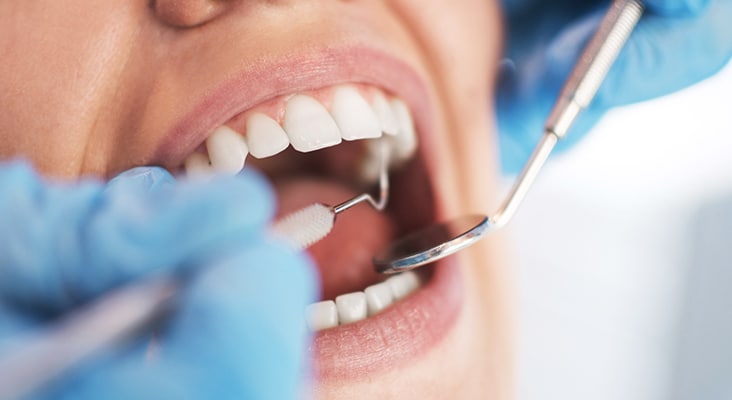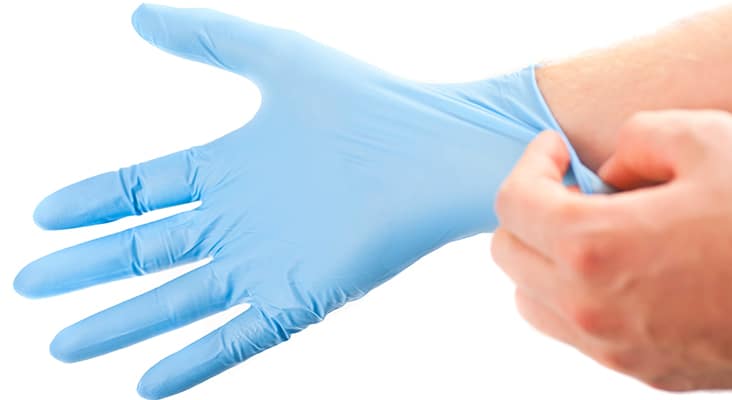Choosing the Right Gloves
Oral health professionals are at daily risk of disease exposure, and gloves provide the most important barrier to disease transmission.

Oral health professionals are at daily risk of disease exposure, and gloves provide the most important barrier to disease transmission. Knowing how to perform proper hand hygiene, choose the right glove, and follow the steps for safe glove use will help keep clinicians and patients safe and healthy. The federal government has created regulations and recommendations to prevent disease transmission and promote safe health-care procedures. The Occupational Safety and Health Administration (OSHA) was created in 1970 to protect the health and safety of all workers. In 1987, regulations for chemical safety were addressed with the addition of the Hazard Communication Standard and, in 1991, the Bloodborne Pathogens (BBP) Standards designed to protect against bloodborne pathogens were finalized.
Photo Credit: Roman Babakin / iStock / Getty Images Plus

Protect Yourself
In the dental setting, gloves are just one of the types of personal protective equipment (PPE) mandated by OSHA. They are used to protect the wearer and patient from the spread of infection or illness during examinations and other procedures. Gloves provide an essential layer of barrier protection against direct contact with infectious agents that are transmitted during exposure to blood and bloody saliva, contaminated objects, and surfaces. With more than 700 species of bacteria detected in the mouth, and the ability of some pathogens—such as methicillin-resistant Staphylococcus Aureus—to live on a surface for up to 7 months, oral health professionals need to follow the basic principles of infection control.
Photo Credit: Bojan89 / iStock / Getty Images Plus

Single-Use Disposable Patient Care Gloves
Exam gloves are used for examining patients and performing procedures that involve contact with mucous membranes. They are not intended for surgical procedures. Surgical gloves are sterile gloves that should be used for all oral surgical procedures. A surgical hand wash must be performed before donning these gloves. Individually packaged pairs are often offered in hand-specific designs and sizes.
Photo Credit: Garrett Aitken / iStock / Getty Images Plus

Nonpatient Care Gloves: Utility Gloves
Heavy duty utility gloves are a vital but often underutilized type of PPE. They are not used for direct patient care. Both OSHA and CDC indicate that chemical- and puncture-resistant utility gloves should be worn when processing contaminated instruments and performing housekeeping duties (eg, cleaning and disinfecting) and tasks involving chemicals.8 Heavy duty utility gloves offer significant protection against both percutaneous injury and chemical exposure. Typically composed of nitrile or neoprene, they should be washed and disinfected after use. Some types may be heat sterilized; this would be indicated in the manufacturer’s instructions for use (IFU). Heavy duty utility gloves are not considered a medical device; therefore, the FDA does not regulate manufacturing standards. Oral health professionals should have their own pair of well-fitting utility gloves. Utility overgloves are similar to food-handling gloves. They may be worn over contaminated exam gloves to prevent cross-contamination when clinicians need to handle an item, such as retrieve a hand mirror from a drawer, during patient care.
Photo Credit: solidcolours / iStock / Getty Images Plus

Selection Criteria
Choose the best glove based on the following considerations.
- The task at hand. Gloves should be chosen based on the procedure to be performed (eg, patient exam or surgery)
- Material: latex or nonlatex
- Skin sensitivity: consider latex or nitrile allergies
- Size: Offices should have a variety available
- Fit: a snug but comfortable fit is best. If too large, gloves may impede task performance. If too small, they may cause hand discomfort.
- Ambidextrous or hand-specific gloves: based on clinician preference while considering the length of procedure time
- Tactile sensation: sensitivity should not be significantly reduced. Consider grip, glove thickness, and if the material will be slippery when wet.
Photo Credit: Bojan89 / iStock / Getty Images Plus

Safety First
Hands are the main pathway of disease transmission. Hand hygiene is the most effective way to prevent the spread of infection, thus it must always be done prior to gloving. Routine hand washing with antiseptic hand wash, the use of antiseptic hand rub, or surgical hand antisepsis are all types of hand hygiene. Oral health professionals involved in patient care must be able to perform this task correctly and at the right time. The use of gloves never replaces the need for cleaning hands.
Photo Credit: wakila / E+

Healthy Skin
Healthy, intact skin is the best defense against pathogen transmission and infection. Selection and use of appropriate medical grade moisturizers and other hand hygiene products are necessary. In an effort to prevent dryness and contact dermatitis often caused by frequent hand hygiene, clinicians often apply lotions. However, lotions with a petroleum-base can hinder the effectiveness of latex gloves. Therefore, oral health professionals should consider using only water-based lotions during the workday.

